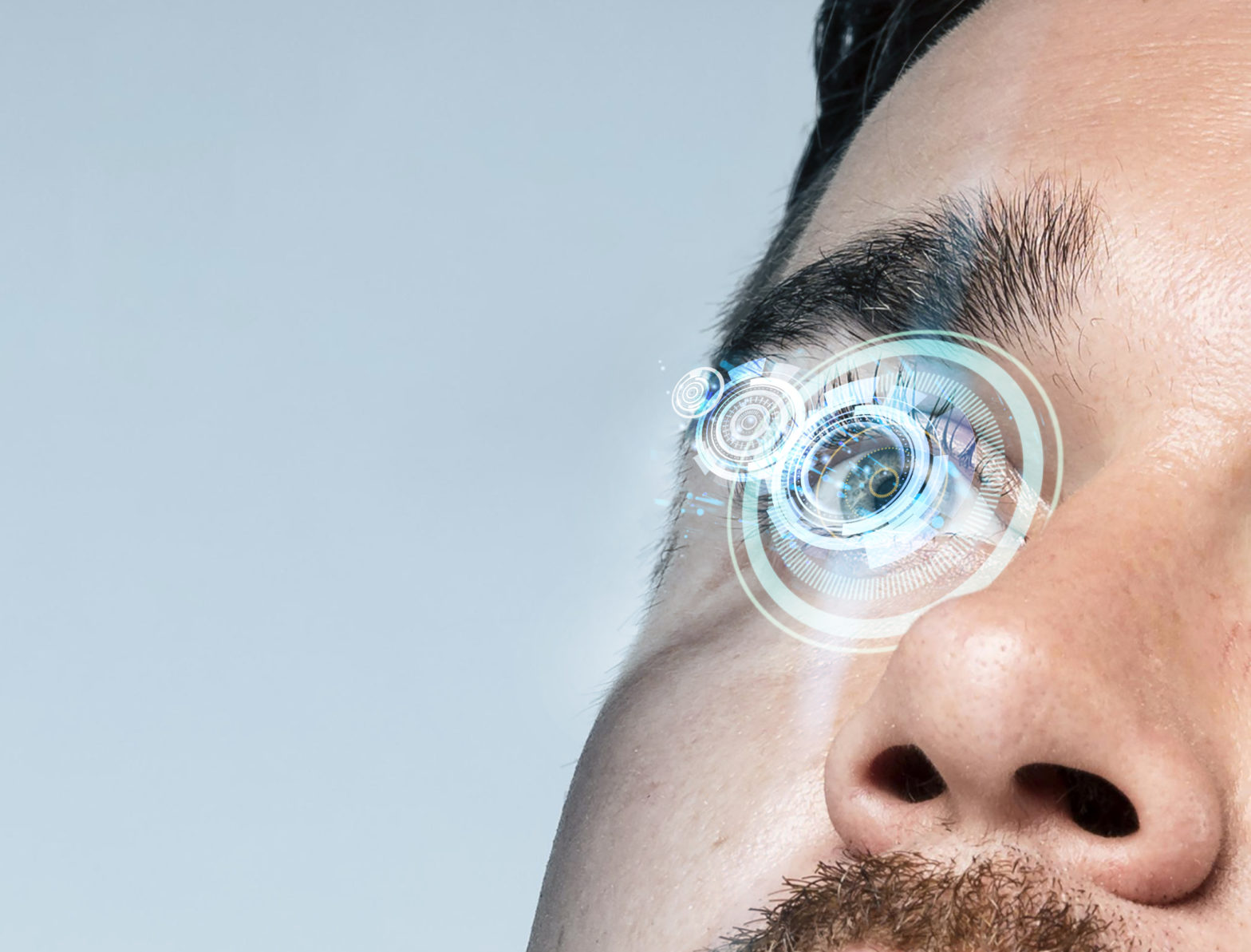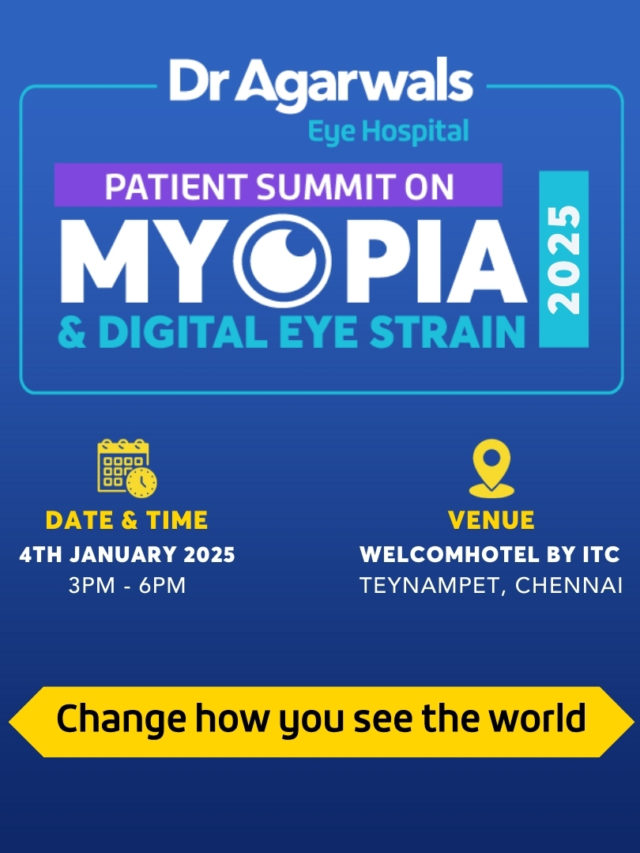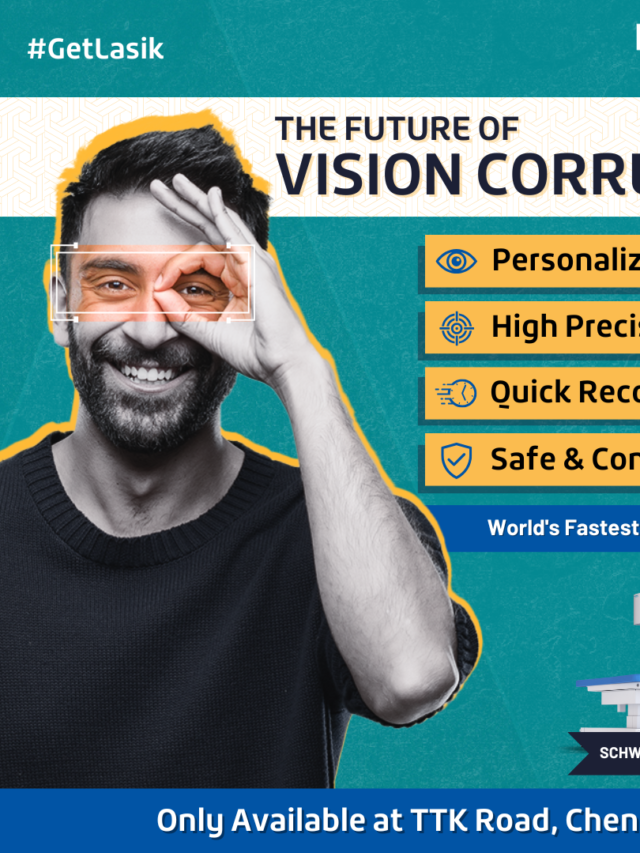సాంకేతికత మెరుపు వేగంతో అభివృద్ధి చెందుతున్న ప్రపంచంలో, కంటి శస్త్రచికిత్స వైద్యశాస్త్రంలో అత్యంత డైనమిక్ మరియు పరివర్తన కలిగించే రంగాలలో ఒకటిగా మారింది. ఒకప్పుడు సైన్స్ ఫిక్షన్గా పరిగణించబడినది ఇప్పుడు సర్జన్లు మరియు శాస్త్రవేత్తలు సాధ్యమయ్యే సరిహద్దులను దాటడంతో వాస్తవంగా మారుతోంది. అత్యాధునిక లేజర్ పద్ధతుల నుండి జన్యు చికిత్స మరియు బయోనిక్ కళ్ళ వరకు, కంటి శస్త్రచికిత్స యొక్క భవిష్యత్తు దృష్టిని పునరుద్ధరించడానికి మరియు మన చుట్టూ ఉన్న ప్రపంచాన్ని మనం ఎలా గ్రహిస్తామో పునర్నిర్వచించగల సామర్థ్యాన్ని కలిగి ఉంది.
కంటి శస్త్రచికిత్స పరిణామం: సరళత నుండి అధునాతనత వరకు
కంటి శస్త్రచికిత్స అనేది ముడి పరికరాలను ఉపయోగించి కంటిశుక్లం వెలికితీసే పురాతన పద్ధతి నుండి చాలా దూరం వచ్చింది. ప్రారంభ రోజుల్లో, దృష్టిని పునరుద్ధరించడం అనేది ట్రయల్ మరియు ఎర్రర్ ద్వారా జరిగేది, తరచుగా గణనీయమైన ప్రమాదాలతో కూడి ఉంటుంది. అయితే, సూక్ష్మదర్శిని మరియు ఆధునిక శస్త్రచికిత్సా సాధనాల ఆగమనంతో, విధానాలు మరింత ఖచ్చితమైనవి, సురక్షితమైనవి మరియు ప్రభావవంతమైనవిగా మారాయి.
20వ శతాబ్దంలో, LASIK వంటి పద్ధతుల అభివృద్ధి దృష్టి దిద్దుబాటులో విప్లవాత్మక మార్పులు తెచ్చింది, లక్షలాది మంది అద్దాలు మరియు కాంటాక్ట్ లెన్స్ల నుండి విముక్తి పొందేందుకు వీలు కల్పించింది. కానీ నేటి ఆవిష్కరణలు కేవలం దృష్టి దిద్దుబాటుకు మించి ఉన్నాయి - అవి కంటి ఆరోగ్యాన్ని మెరుగుపరచడం, అంధత్వాన్ని నివారించడం మరియు గతంలో చికిత్స చేయలేని పరిస్థితులకు పరిష్కారాలను అందించడం లక్ష్యంగా పెట్టుకున్నాయి.
కంటి శస్త్రచికిత్స రంగాన్ని పునర్నిర్మిస్తున్న కొన్ని విప్లవాత్మక పురోగతులను నిశితంగా పరిశీలిద్దాం.
1. స్మైల్ సర్జరీ: లాసిక్ దాటి ఒక అడుగు
స్మాల్ ఇన్సిషన్ లెంటిక్యూల్ ఎక్స్ట్రాక్షన్ (SMILE) అనేది లేజర్ రిఫ్రాక్టివ్ సర్జరీలో తాజా పరిణామం. LASIK దృష్టిని సరిచేయడానికి కార్నియాను పునర్నిర్మించినప్పటికీ, SMILE కనిష్ట ఇన్వాసివ్ విధానంతో అలా చేస్తుంది, ఇది కన్ను పొడిబారడం మరియు కార్నియల్ బలహీనపడటం వంటి సమస్యల ప్రమాదాన్ని తగ్గిస్తుంది.
కార్నియాపై ఫ్లాప్ను సృష్టించే LASIK వలె కాకుండా, SMILE ఒక చిన్న డిస్క్ కణజాలం (లెంటిక్యూల్)ను సృష్టించడానికి ఫెమ్టోసెకండ్ లేజర్ను ఉపయోగిస్తుంది, దీనిని చిన్న కోత ద్వారా తొలగిస్తారు. ఈ పద్ధతి చాలా ఖచ్చితమైనది, తక్కువ వైద్యం సమయం అవసరం మరియు సన్నని కార్నియాలు లేదా చురుకైన జీవనశైలి ఉన్న రోగులకు అనువైనది.
ఇది గేమ్-ఛేంజర్ ఎందుకు:
- తక్కువ ఇన్వాసివ్ మరియు వేగవంతమైన రికవరీ
- కళ్ళు పొడిబారే ప్రమాదం తక్కువ
- గతంలో LASIK కి అనర్హులైన రోగులకు అనుకూలం
2. జన్యు చికిత్స: జన్యు స్థాయిలో దృష్టిని పునరుద్ధరించడం
జన్యుపరమైన రుగ్మతల వల్ల కలిగే అంధత్వాన్ని లోపభూయిష్ట జన్యువులను సవరించడం ద్వారా తిప్పికొట్టగల ప్రపంచాన్ని ఊహించుకోండి. జన్యు చికిత్స ఇకపై సుదూర కల కాదు - అది నేడు జరుగుతోంది. వారసత్వంగా వచ్చే రెటీనా వ్యాధికి FDA-ఆమోదించిన మొదటి జన్యు చికిత్స అయిన లక్స్టర్నా, లెబర్స్ కంజెనిటల్ అమౌరోసిస్ మరియు రెటినిటిస్ పిగ్మెంటోసా వంటి పరిస్థితులకు చికిత్స చేయడానికి మార్గం సుగమం చేసింది.
ఈ విప్లవాత్మక ప్రక్రియలో, లోపభూయిష్ట జన్యువు యొక్క ఆరోగ్యకరమైన కాపీని వైరల్ వెక్టర్ ఉపయోగించి నేరుగా రెటీనా కణాలలోకి పంపిస్తారు. లోపలికి ప్రవేశించిన తర్వాత, జన్యువు దృష్టిని పునరుద్ధరించడానికి లేదా సంరక్షించడానికి అవసరమైన ప్రోటీన్లను ఉత్పత్తి చేయడం ప్రారంభిస్తుంది.
దీన్ని విప్లవాత్మకంగా మార్చేది:
- వారసత్వంగా వచ్చే అంధత్వాన్ని నయం చేసే సామర్థ్యం
- ఒకే చికిత్సతో దీర్ఘకాలిక ప్రభావం
- CRISPR టెక్నాలజీని ఉపయోగించి భవిష్యత్తులో జన్యు-సవరణ పురోగతికి తలుపులు తెరుస్తుంది.
3. బయోనిక్ కళ్ళు: ప్రకృతి పరిమితులకు మించిన దృష్టి
తీవ్రమైన దృష్టి నష్టం లేదా పూర్తి అంధత్వంతో బాధపడుతున్న రోగులకు, బయోనిక్ కళ్ళు (రెటీనా ఇంప్లాంట్లు అని కూడా పిలుస్తారు) ఇంతకు ముందు ఎన్నడూ లేని విధంగా ఆశను అందిస్తాయి. ఆర్గస్ II రెటీనా ప్రొస్థెసిస్ సిస్టమ్ వంటి పరికరాలు దెబ్బతిన్న ఫోటోరిసెప్టర్లను దాటవేసి, మిగిలిన ఆరోగ్యకరమైన రెటీనా కణాలను ఉత్తేజపరచడం ద్వారా పనిచేస్తాయి. ఇంప్లాంట్ అద్దాలపై అమర్చిన కెమెరా ద్వారా దృశ్య సమాచారాన్ని సంగ్రహిస్తుంది, దానిని మెదడు చిత్రాలుగా అర్థం చేసుకోగల విద్యుత్ సంకేతాలుగా మారుస్తుంది.
ప్రస్తుత బయోనిక్ కంటి వ్యవస్థలు పరిమిత దృష్టిని అందిస్తున్నప్పటికీ, భవిష్యత్ పురోగతులు అధిక-రిజల్యూషన్ దృష్టిని మరియు రంగు అవగాహనను కూడా అందించవచ్చు.
బయోనిక్ కళ్ళు ఎందుకు ముఖ్యమైనవి:
- అంధులకు క్రియాత్మక దృష్టిని పునరుద్ధరించండి
- అప్గ్రేడ్లతో కాలక్రమేణా మెరుగుపడే అవకాశం
- సహజ పరిమితులకు మించి మానవ దృష్టిని పెంచే అవకాశాలను విస్తరిస్తుంది.
4. బయో ఇంజనీర్డ్ టిష్యూ ఉపయోగించి కార్నియల్ మార్పిడి
కంటి ముందు భాగంలో కనిపించే కార్నియా, దృష్టిని కేంద్రీకరించడంలో కీలక పాత్ర పోషిస్తుంది. గాయం లేదా వ్యాధి కారణంగా కార్నియల్ దెబ్బతినడం వల్ల తీవ్రమైన దృష్టి లోపం లేదా అంధత్వం ఏర్పడుతుంది. సాంప్రదాయకంగా, కార్నియల్ మార్పిడికి దాత కణజాలం అవసరం, కానీ బయో ఇంజనీరింగ్లో పురోగతి దానిని మారుస్తోంది.
శాస్త్రవేత్తలు ఇప్పుడు స్టెమ్ సెల్స్ మరియు బయో కాంపాజిబుల్ పదార్థాలను ఉపయోగించి ప్రయోగశాలలో సృష్టించబడిన కార్నియాలను పెంచుతున్నారు. 2022లో, ఒక సంచలనాత్మక క్లినికల్ ట్రయల్, కార్నియల్ వ్యాధి కారణంగా అంధులైన రోగులకు బయోఇంజనీర్డ్ కార్నియాలు దృష్టిని పునరుద్ధరించగలవని చూపించింది.
కీలక ప్రయోజనాలు:
- దాత కణజాలంపై ఆధారపడటం తగ్గింది
- తిరస్కరణ ప్రమాదం తక్కువ
- ప్రపంచ డిమాండ్ను తీర్చడానికి భారీ ఉత్పత్తికి అవకాశం
5. రోబోటిక్-సహాయక కంటి శస్త్రచికిత్స: మానవ చేతులకు మించిన ఖచ్చితత్వం
రోబోటిక్స్ అసమానమైన ఖచ్చితత్వం మరియు ఖచ్చితత్వాన్ని అందించడం ద్వారా కంటి శస్త్రచికిత్సలో తనదైన ముద్ర వేస్తోంది. PRECEYES సర్జికల్ సిస్టమ్ వంటి రోబోటిక్-సహాయక వ్యవస్థలు, సర్జన్లు గతంలో కంటే ఎక్కువ నియంత్రణతో సున్నితమైన విధానాలను నిర్వహించడానికి అనుమతిస్తాయి. ఈ వ్యవస్థలు రెటీనా శస్త్రచికిత్సలకు చాలా విలువైనవి, ఇక్కడ స్వల్పంగా వణుకు కూడా ఫలితాలను ప్రభావితం చేస్తుంది.
ఈ రోబోటిక్ చేతులు మానవ సామర్థ్యానికి మించిన ఖచ్చితత్వంతో సూక్ష్మ కదలికలను అమలు చేయగలవు, కణజాల నష్టాన్ని తగ్గించి, వేగంగా కోలుకునేలా చేస్తాయి.
రోబోటిక్ సహాయంతో శస్త్రచికిత్స యొక్క ప్రయోజనాలు:
- సున్నితమైన విధానాలలో మెరుగైన ఖచ్చితత్వం
- తక్కువ శస్త్రచికిత్స వ్యవధులు
- మెరుగైన ఫలితాలు మరియు తక్కువ సమస్యలు
6. కృత్రిమ మేధస్సు: అత్యుత్తమ వ్యక్తిగతీకరించిన కంటి సంరక్షణ
కంటి పరిస్థితులను నిర్ధారించే, పర్యవేక్షించే మరియు చికిత్స చేసే విధానాన్ని కృత్రిమ మేధస్సు (AI) మారుస్తోంది. AI-ఆధారిత ఇమేజింగ్ వ్యవస్థలు రెటీనా మరియు ఆప్టిక్ నరాలలో సూక్ష్మమైన మార్పులను గుర్తించగలవు, గ్లాకోమా, డయాబెటిక్ రెటినోపతి మరియు వయస్సు-సంబంధిత మాక్యులర్ డీజెనరేషన్ వంటి వ్యాధులను ముందస్తుగా గుర్తించడంలో సహాయపడతాయి.
శస్త్రచికిత్సలో, AI అల్గోరిథంలు వ్యక్తిగతీకరించిన చికిత్స ప్రణాళికలను రూపొందించడంలో, లేజర్ సెట్టింగ్లను ఆప్టిమైజ్ చేయడంలో మరియు శస్త్రచికిత్స అనంతర ఫలితాలను అంచనా వేయడంలో సహాయపడతాయి. ఈ స్థాయి అనుకూలీకరణ రోగులు వారి నిర్దిష్ట అవసరాలకు అనుగుణంగా అత్యంత ప్రభావవంతమైన సంరక్షణను పొందేలా చేస్తుంది.
కంటి శస్త్రచికిత్సలో AI పాత్ర:
- ఖచ్చితమైన రోగ నిర్ధారణ మరియు శస్త్రచికిత్స ప్రణాళిక
- మెరుగైన ఫలితాల కోసం అంచనా విశ్లేషణలు
- శస్త్రచికిత్స సమయంలో లోపాలు తగ్గుతాయి
7. అధునాతన కంటిశుక్లం శస్త్రచికిత్స: లెన్స్ భర్తీకి మించి
కంటిశుక్లం శస్త్రచికిత్స సాధారణ లెన్స్ రీప్లేస్మెంట్ ప్రక్రియ నుండి ఆస్టిగ్మాటిజం మరియు ప్రెస్బియోపియా వంటి దృష్టి సమస్యలను సరిచేయగల అత్యంత అధునాతన ఆపరేషన్గా అభివృద్ధి చెందింది. ఫెమ్టోసెకండ్ లేజర్-అసిస్టెడ్ క్యాటరాక్ట్ సర్జరీ (FLACS) వంటి ఆధునిక పద్ధతులు ఎక్కువ ఖచ్చితత్వం మరియు భద్రతను అందిస్తాయి.
ఇంట్రాకోక్యులర్ లెన్సులు (IOLలు) కూడా గణనీయంగా అభివృద్ధి చెందాయి. మల్టీఫోకల్ మరియు టోరిక్ IOLలు వంటి ప్రీమియం లెన్సులు, రోగులు బహుళ దూరాలలో స్పష్టమైన దృష్టిని సాధించడానికి అనుమతిస్తాయి, తరచుగా శస్త్రచికిత్స తర్వాత అద్దాల అవసరాన్ని తొలగిస్తాయి.
ఆధునిక కంటిశుక్లం శస్త్రచికిత్సను ఏది వేరు చేస్తుంది:
- విభిన్న దృష్టి అవసరాల కోసం అనుకూలీకరించిన లెన్స్ ఎంపికలు
- తక్కువ సమస్యలకు లేజర్ ఖచ్చితత్వం
- వేగవంతమైన కోలుకోవడం మరియు మెరుగైన దీర్ఘకాలిక ఫలితాలు
భవిష్యత్తు: ముందుకు ఏమి ఉంది
సాంకేతికత అభివృద్ధి చెందుతూనే ఉండటంతో, కంటి శస్త్రచికిత్స యొక్క భవిష్యత్తు అపరిమిత అవకాశాలను కలిగి ఉంది. ప్రభావిత కణాలకు నేరుగా ఔషధాలను అందించడానికి శాస్త్రవేత్తలు నానోటెక్నాలజీ ఆధారిత చికిత్సలను అన్వేషిస్తున్నారు మరియు స్టెమ్ సెల్ థెరపీ దెబ్బతిన్న రెటీనా కణజాలాన్ని పునరుత్పత్తి చేయగలదు. సర్జన్లకు శిక్షణ ఇవ్వడంలో మరియు శస్త్రచికిత్స ఖచ్చితత్వాన్ని పెంచడంలో ఆగ్మెంటెడ్ రియాలిటీ (AR) మరియు వర్చువల్ రియాలిటీ (VR) కూడా పాత్ర పోషిస్తాయని భావిస్తున్నారు.
అంధులకు పూర్తిగా చూపును పునరుద్ధరించాలనే కల ఇంతకు ముందు కంటే దగ్గరగా ఉంది. నిరంతర పరిశోధన, సహకారం మరియు ఆవిష్కరణలతో, కంటి శస్త్రచికిత్స యొక్క సరిహద్దులు విస్తరిస్తూనే ఉంటాయి - ప్రపంచవ్యాప్తంగా లక్షలాది మందికి ఆశను కలిగిస్తాయి.
కంటి శస్త్రచికిత్సలో కొత్త సరిహద్దులను అన్వేషించడం అంటే సాంకేతిక పురోగతి కంటే ఎక్కువ - ఇది జీవితాలను మార్చడం గురించి. కోల్పోయిన దృష్టిని పునరుద్ధరించడం నుండి ప్రకృతి ఉద్దేశించిన దానికంటే మించి దానిని మెరుగుపరచడం వరకు, ఈ పురోగతులు ప్రతి ఒక్కరూ ప్రపంచాన్ని స్పష్టంగా చూసే అవకాశం ఉన్న భవిష్యత్తును అందిస్తాయి. ప్రతి ఆవిష్కరణతో, అంధత్వం ఇకపై తిరిగి మార్చలేని విధిగా లేని ప్రపంచానికి మనం ఒక అడుగు దగ్గరగా వెళ్తాము.
తదుపరి ఏమి జరుగుతుందో గమనిస్తూనే ఉందాం—ఎందుకంటే దృష్టి భవిష్యత్తు గతంలో కంటే ప్రకాశవంతంగా ఉంది.









